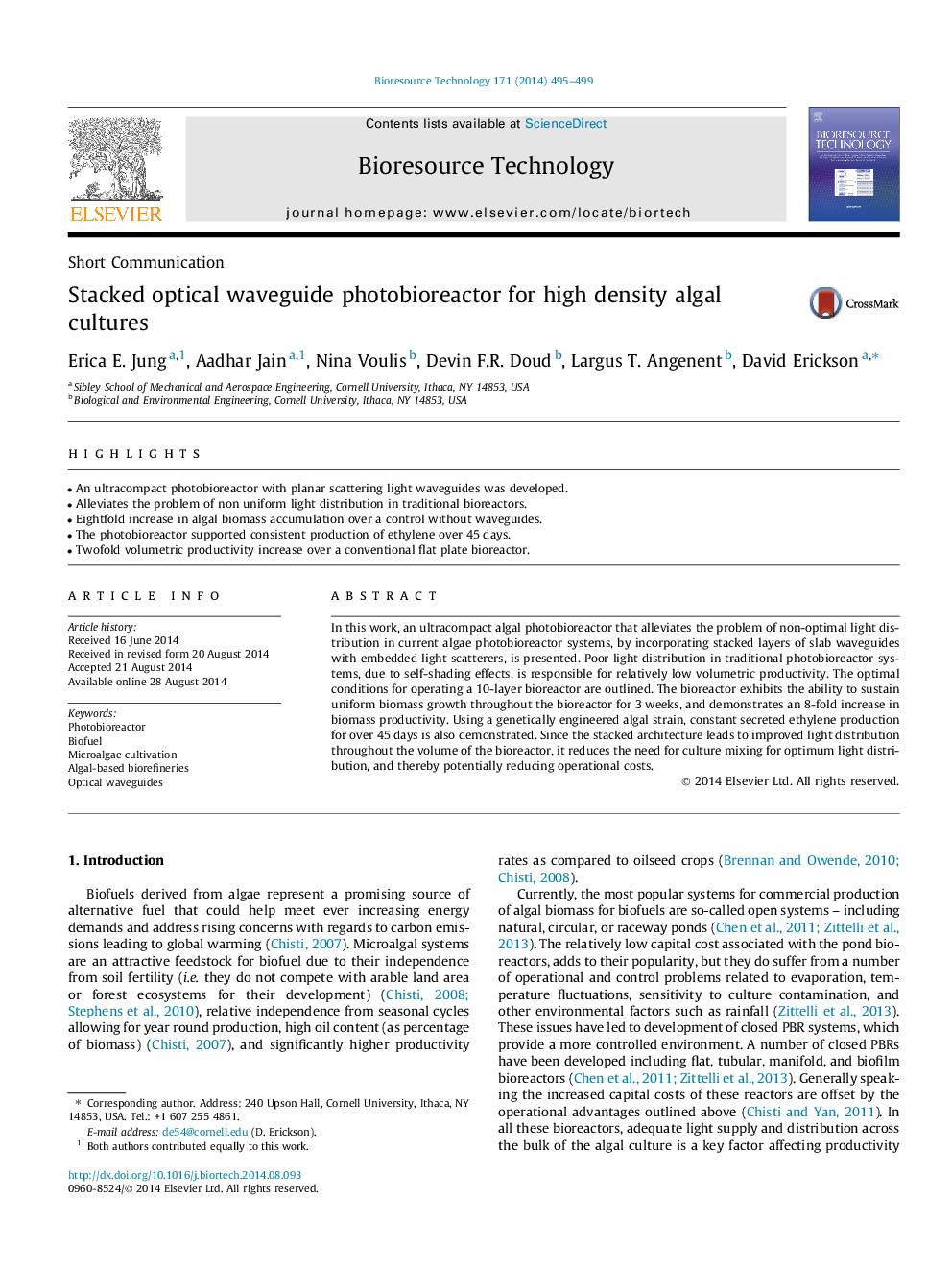| Article ID | Journal | Published Year | Pages | File Type |
|---|---|---|---|---|
| 680412 | Bioresource Technology | 2014 | 5 Pages |
•An ultracompact photobioreactor with planar scattering light waveguides was developed.•Alleviates the problem of non uniform light distribution in traditional bioreactors.•Eightfold increase in algal biomass accumulation over a control without waveguides.•The photobioreactor supported consistent production of ethylene over 45 days.•Twofold volumetric productivity increase over a conventional flat plate bioreactor.
In this work, an ultracompact algal photobioreactor that alleviates the problem of non-optimal light distribution in current algae photobioreactor systems, by incorporating stacked layers of slab waveguides with embedded light scatterers, is presented. Poor light distribution in traditional photobioreactor systems, due to self-shading effects, is responsible for relatively low volumetric productivity. The optimal conditions for operating a 10-layer bioreactor are outlined. The bioreactor exhibits the ability to sustain uniform biomass growth throughout the bioreactor for 3 weeks, and demonstrates an 8-fold increase in biomass productivity. Using a genetically engineered algal strain, constant secreted ethylene production for over 45 days is also demonstrated. Since the stacked architecture leads to improved light distribution throughout the volume of the bioreactor, it reduces the need for culture mixing for optimum light distribution, and thereby potentially reducing operational costs.
